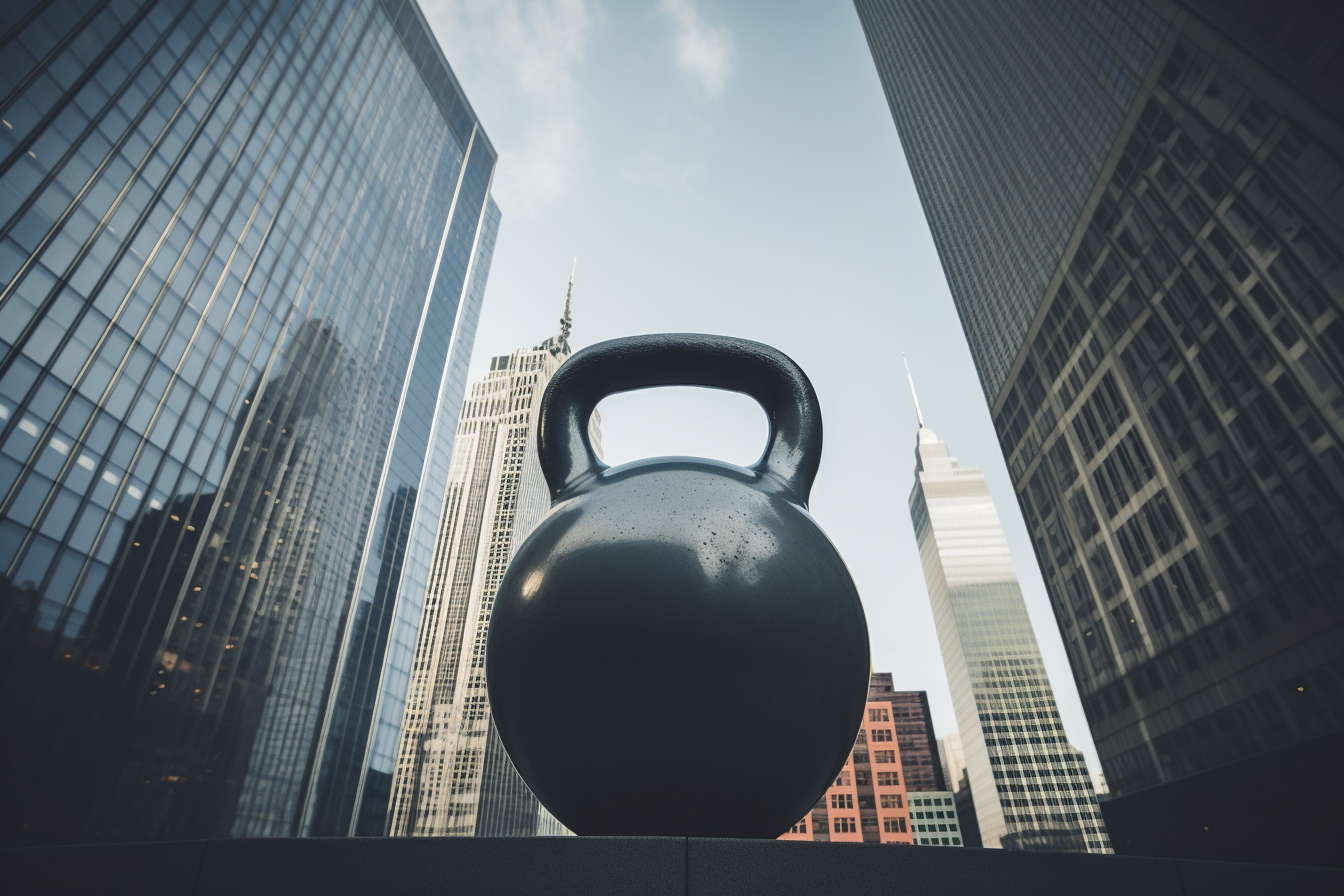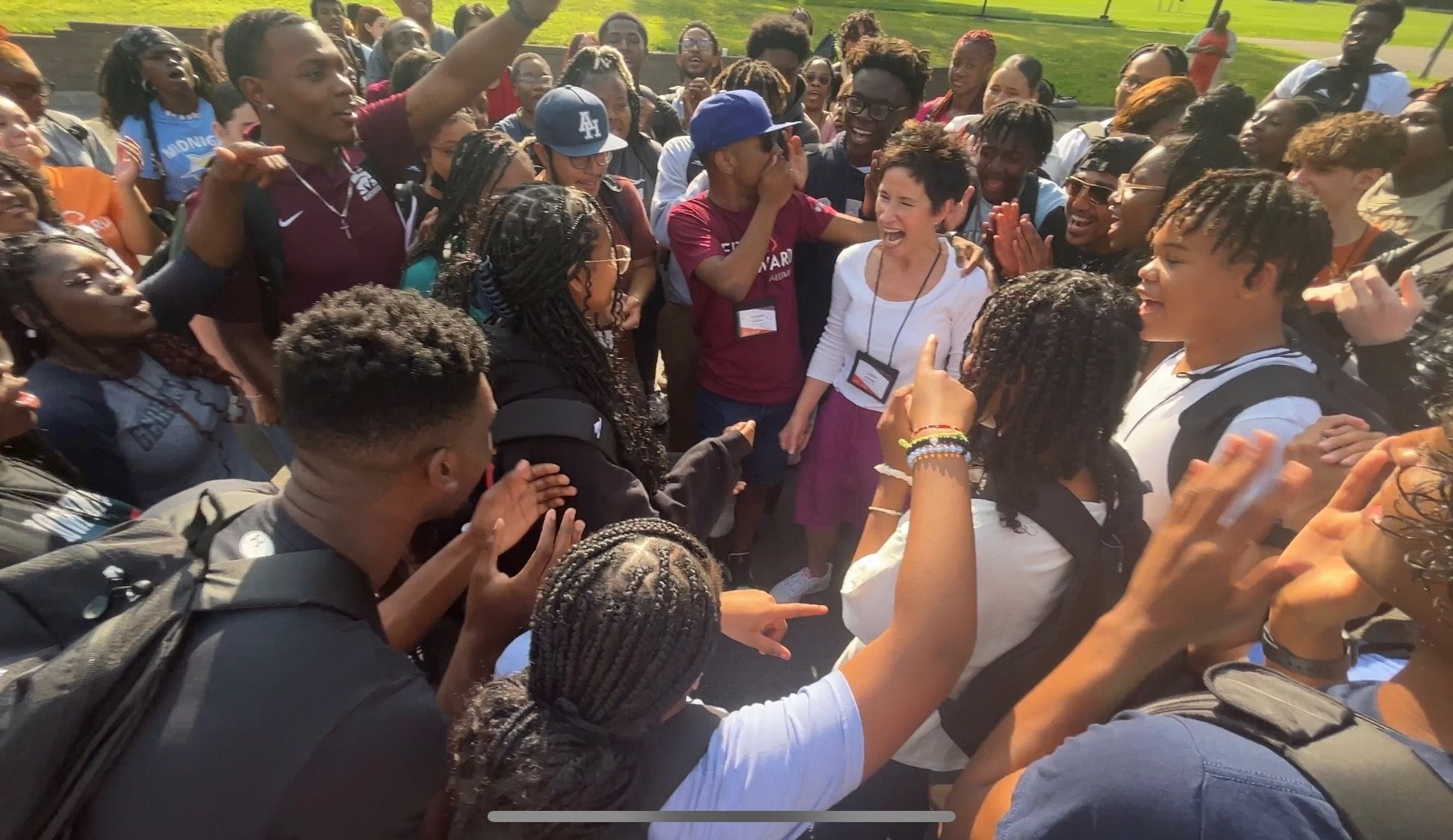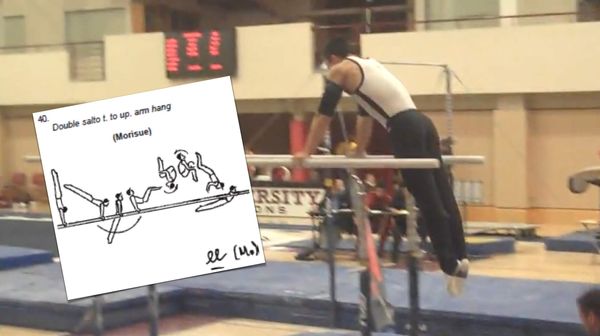I want to tell some stories about courage because I believe it is the first virtue. I told an abbreviated version of this story in CR#076 but this one gives you a much more in-depth version of it.
This first one is of physical courage, because that's often the first place people go, but in the following weeks we'll look also and emotional and professional courage.
In my sophomore year of high school, the gymnastics center I had trained at for 9 years moved its boys program to a new facility much farther away. My mother, herself a coach at the same center, took this opportunity to explore other programs in the area as she felt I could get better training elsewhere.
I wound up at a place called Charles River Gymnastics Academy. Compared to my old gym, it felt cramped, the equipment dated, the floor exercise an unsettling shade of red instead of an expansive royal blue. But at Charles River there was a new boys coach named Levon Karakhanyan.
After retiring from the Armenian National Team and winning several USSR championships, and a stint coaching & competing in Brazil, he was a recent immigrant. Only 30 or 31, Levon had a hook nose and deep set eyes that bore into you when his gaze swung your way. I improved rapidly under his regimented training—complete with yelling and corporeal punishment for poor form—and qualified onto the US Junior National Team at the age of 15.
We were invited to spend a week at the US Olympic Training Center in Colorado Springs. Training camp was a nearly monastic experience, replacing hours of meditation and prayer with drills and conditioning sessions—before breakfast, before lunch, and before dinner, with lectures and film at night.

Training camp was a chance to learn from the best coaches and athletes across the country, and you wanted to show your stuff. One afternoon I was finishing up my last event for the day, the parallel bars, working on one of my signature skills: the Morisue.
In gymnastics, new skills are named after the first gymnast to perform the skill, and this move was first done in the 1980's by Shinji Morisue.
To perform a Morisue, you swing upright through the bars, release both hands simultaneously, pull yourself into a tuck position and complete one-and-a-half rotations before catching the bars with your upper arms.
A video might help—sadly I can't find a clip of me doing it so you'll have to take my word for it:
"Ok Jay, let's do more more. Make it piked." Levon said to me.
Going from tucked to piked on my Morisue meant keeping my knees close to my chest but extending my legs out, thus slowing my rotation. It was considered more difficult and thus a higher value skill.
I had never done a piked Morisue before so I was a bit surprised to hear him issue this command. But training camp was a special place and I had seen other gymnasts try new moves for the first time earlier in the week.
Levon must have thought I was ready.
"Are you sure?" I asked.
"Yes, come on. Let's go."
That settled it—I started chalking up. During training camp, the facility would open up the back gym where the senior national team guys usually trained and moved much of the equipment into the adjacent basketball court.
The parallel bars were out by the three point line, surrounded by blue 4-inch crash mats. The other athletes and coaches were wrapping up their training, so the gym was abnormally quiet as I adjusted the neoprene arm pads that eased the landing of the Morisue on my biceps, and mounted on the parallel bars.
With the reckless bravado of youth, I swung hard down the bars and kicked into what I hoped would be an epic piked Morisue. But instead of catching smoothly on to the pads, I crashed onto the back of my shoulders and fell through the bars onto the floor.
Dazed and in pain, I moaned. Levon ran over to me, concerned and furious.
"What the hell were you doing?"
"I thought you said to do it piked?" I moaned as he helped me up.
"I said to do it perfect. Not piked." A string of Armenian curses spilled out of his mouth.
Another coach brought over two bags of ice that I gingerly placed over my shoulders to reduce the swelling and numb the pain. Athletes and coaches were looking over at us, the odd pair, not even capable of communicating what we were doing.
Levon walked off and stewed for a few minutes and then returned, his voice a bit calmer. "How do you feel Jay?"
"Not great, but I'm ok."
"I know you feel pain. But are you injured?"
Gymnasts know the difference between a bruise or scrape, even a really painful one, and an injury, where some part of you is damaged in a more serious way. As much as my shoulders throbbed, nothing was broken or torn.
"Ok. I want you to do one more Morisue. Tucked. Not piked. Tucked. Finish on a good one."
At the 2020 Tokyo Olympics, Simone Biles caught a case of the "twisties", a kind of psychological block where an athlete can't control their body and twist uncontrollably (I wrote about this in CR#63 and for Fast Company). Despite being such a dominant gymnast, she had to withdraw from the all-around finals and was the subject of massive media discussion.
The twisties is part of a larger family of "mental blocks" where an athlete gets too in their head about a particular movement and Levon wanted to root it out at the source.
If before I felt the naive audacity of pride borne from misunderstanding, I now felt a tentative uncertainty and fear drawn from existing pain. I had just messed up. I was embarrassed. I didn't want to hurt myself again.
The first time you do something and you don't know any better, you can have a sort of false confidence, a false bravado. No big deal. I can make it. But after you eat it, then you realize how painful it can be. And that doesn't mean that you should stop. It means you should reevaluate your circumstance and situation, derisk it.
Levon wasn't asking me to try the piked Morisue again. He was, telling me to do the tucked Morisue, the one I knew how to do, had done hundreds of times successfully. And he pushed me because he knew that the danger was that this failure and the hurt that went with it could lead to a mental block.
I wanted to redeem myself and understood what he was saying. So I chalked up again, aware that people still had their eyes on us, now with morbid curiosity, to see what I would do next. Though it was the end of a long day of training, I knew I had enough in the tank for one more.
I did it.
"Good job Jay. Now we can go home."
When it comes to physical courage, this is the story that comes to mind. Knowing the risks, knowing the pain, and knowing that you can and should do something, and then doing it.
That is courage.
—Jason

PS - stay tuned in the following weeks on stories of emotional and professional courage.
Recent Issues




